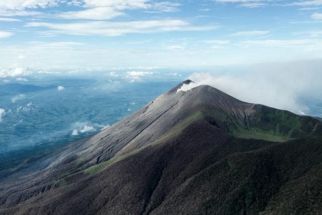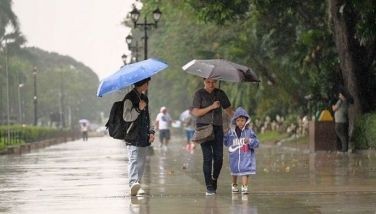‘RP coral reefs, second largest in Asia, in bad shape’
Close to a decade after the El Niño phenomenon hit the country in 1998, Philippine coral reefs – the second largest in
In the latest data of Reef Check, the world’s largest reef conservation organization, only less than five percent of the country’s estimated 27,000 square-kilometers of coral reef are considered in “excellent condition.”
Among them are world-famous destinations like
Domingo Ochavillo, country director of the California-based group, noted that the larger areas of coral reefs are unable to recover from the adverse effects of El Niño and the impact of human activities such as blast fishing and marine pollution over the years.
“In general, the coral reefs in the Philippines are still in bad shape,” Ochavillo said, pointing out that the 1998 El Niño caused the “most serious” impact as it resulted in coral bleaching, or the death of 20 percent of the country’s coral reefs. The El Niño phenomenon is an abnormal warming of surface ocean waters in the eastern tropical Pacific.
“It can be said that it might have even turned for the worse, as it’s a very bleak situation for the coral reefs in the
According to Reef Check’s latest survey, the threats to Philippine coral reefs are similar to most developing countries that have high population growth rates and with local coastal communities contributing a significant portion of the national population.
Reef Check said this “continued burgeoning of the country’s population” is definitely increasing its negative impact on the health of the coral reefs as shown in the group’s indicators.
The group said so-called “high-valued” indicators have very low densities based on their long-term data, and “they seem to have not recovered yet.”
An example, the group survey stressed, is the decreasing density of Napoleon wrasse, a fish species listed under the Convention on International Trade of Endangered Species.
Reef Check said the density of Napoleon wrasse in Philippine coral reefs has been consistently low and almost always zero.
The same observation on barramundi cod has been noted by the conservation organization.
Although the densities of grouper fish (Lapu-lapu) are in a slightly better state, Reef Check said these are nevertheless considered low.
“This group of fishes is highly targeted especially in the live reef fish food trade to account for their low densities. Although these fishes are naturally low in abundance in the wild, over-fishing has pushed their densities much lower,” Reef Check stressed.
Moreover, the group said that it is now very hard to find bump-head parrotfish in fished coral reefs.
Sweetlips, snappers and moral eels are all very low in abundance as well.
However, Reef Check data have indicated that these fishes are more abundant in protected reef areas.
Meanwhile, Reef Check said the trends in the highly targeted invertebrate indicators are likewise not better.
It said that sea cucumbers, lobsters, triton shell, and pencil urchins are very low in abundance.
“The triton shell and the pencil urchins are in fact very hard to find now in fished reefs. These organisms have been highly targeted by fishermen for the curio trade. Giant clams and banded shrimps are still found in many reefs but the impact of over-fishing for the curio and the ornamental trade will continue to drive their abundance much lower,” Reef Check said.
Decreasing trend
Natural disturbances constitute a significant factor that negatively impacts the health of coral reefs. But while typhoons are a normal occurrence in the
However, Ochavillo lamented that human activities continue to aggravate the degradation of coral reef in the country with incidences of over- fishing, dynamite fishing, and marine pollution.
Ochavillo noted that since 1997, the coral reef cover in the
In 1997, he said citing records, the
Ochavillo emphasized that the best way to ensure the protection and preservation of Philippine coral reefs is the establishment of more marine protected areas (MPAs) since this mechanism makes sure that fishing and other human activities are regulated or even banned.
Reef Check underscored recovery in a number of protected reefs, where there is an existing “no-take policy.” These areas include the
- Latest
- Trending































